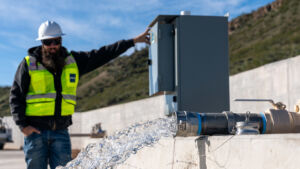4×6 thermal labels are the unsung heroes of modern efficiency. Whether you’re a small business owner navigating the complexities of e-commerce, a bustling warehouse managing inventory, or simply an individual seeking better organization, these versatile labels offer a reliable and cost-effective solution. This comprehensive guide will delve deep into the world of 4×6 thermal labels, exploring their benefits, applications, printing methods, considerations for selection, and troubleshooting common issues.
What are 4×6 Thermal Labels?
At their core, 4×6 thermal labels are self-adhesive labels with dimensions of 4 inches wide and 6 inches high (approximately 101.6mm x 152.4mm). They are specifically designed for use with thermal label printers, which utilize heat to create images and text on the label surface. Unlike inkjet or laser printers that use ink or toner, thermal printers rely on heat-sensitive materials to produce crisp and durable prints.
The key difference between thermal labels and traditional paper labels lies in the printing process. There are two primary types of thermal printing:
Direct Thermal Printing:
In this method, the label paper itself is coated with a heat-sensitive chemical. When heated by the printer’s thermal print head, the coating turns black, creating the desired image or text. Direct thermal labels are ideal for temporary applications like shipping labels, receipts, and food labeling, as they are more susceptible to fading when exposed to heat, sunlight, or abrasion.
Thermal Transfer Printing:
This process utilizes a thermal ribbon coated with wax or resin-based ink. The printer heats the ribbon, transferring the ink onto the label paper. Thermal transfer labels offer greater durability and resistance to environmental factors compared to direct thermal labels. They are suitable for long-term applications like asset tracking, product identification, and archival purposes.
4×6 is the most common size for shipping labels, making them the standard for businesses shipping goods via carriers like UPS, FedEx, USPS, and DHL. This standardized size ensures compatibility with carrier-provided shipping software and scanners.
The Benefits of Using 4×6 Thermal Labels:
The popularity of 4×6 thermal labels stems from their numerous advantages, making them a superior choice for a wide array of applications:
Cost-Effectiveness:
Thermal printing eliminates the need for expensive ink cartridges or toner, significantly reducing printing costs in the long run. While the initial investment in a thermal printer might be higher, the lower per-label cost makes it a financially sound decision, especially for businesses with high printing volumes.
Speed and Efficiency:
Thermal printers are renowned for their speed, allowing for rapid label printing. This is crucial for businesses needing to process large quantities of shipments quickly and efficiently. The speed of thermal printing minimizes delays and streamlines operations.
Durability and Reliability:
Thermal labels, particularly thermal transfer labels, offer excellent resistance to smudging, scratching, fading, and environmental factors like moisture and chemicals. This ensures that labels remain legible and scannable throughout the shipping or storage process.
High-Quality Printing:
Thermal printers produce crisp, clear, and high-resolution prints, ensuring that barcodes, text, and images are easily readable by scanners and humans alike. This accuracy is paramount for preventing errors in shipping, inventory management, and other critical processes.
Ease of Use:
Thermal printers are generally user-friendly, with simple setup and operation. They often come with intuitive software that allows for easy label design and printing, even for users with limited technical expertise.
Versatility:
4×6 thermal labels can be used for a multitude of applications beyond shipping, including product labeling, inventory management, address labels, barcode labels, and more. Their versatility makes them a valuable asset for various industries and organizational needs.
Professional Appearance:
Consistent, high-quality labels project a professional image, enhancing brand perception and customer satisfaction. A well-labeled package or product reflects attention to detail and professionalism.
Key Applications of 4×6 Thermal Labels:
The applications of 4×6 thermal labels are vast and diverse, spanning numerous industries and use cases:
Shipping:
The most common application is for printing shipping labels for major carriers like UPS, FedEx, USPS, and DHL. Their standardized size and compatibility with carrier software make them the ideal choice for streamlining shipping processes.
E-commerce:
Online retailers rely heavily on 4×6 thermal labels for order fulfillment. They are used to print shipping labels, return labels, and packing slips, ensuring efficient and accurate delivery of goods.
Warehouse Management:
Thermal labels are essential for inventory tracking and management in warehouses. They are used to label shelves, pallets, and boxes, enabling quick and easy identification and retrieval of items.
Healthcare:
In healthcare settings, thermal labels are used for patient identification, medication labeling, and specimen tracking. Their accuracy and resistance to chemicals are crucial for patient safety and regulatory compliance.
Manufacturing:
Manufacturing companies use thermal labels for component labeling, product tracking, and quality control. They are essential for managing complex manufacturing processes and ensuring product traceability.
Food Industry:
Thermal labels are used for food labeling, including ingredients, nutritional information, and expiration dates. They are often required by law to ensure consumer safety and transparency. Direct thermal labels are often used in this context.
Logistics:
The logistics industry relies heavily on thermal labels for tracking shipments, managing inventory, and optimizing supply chain operations.
Asset Tracking:
Businesses use thermal labels for tracking valuable assets, such as equipment, tools, and vehicles. This helps prevent loss, theft, and misplacement.
Organization:
On a more personal level, 4×6 thermal labels can be used for home organization, labeling storage bins, files, and other items.
Choosing the Right 4×6 Thermal Labels:
Selecting the appropriate 4×6 thermal labels is crucial for optimal performance and longevity. Several factors should be considered:
Label Type (Direct Thermal vs. Thermal Transfer):
As mentioned earlier, direct thermal labels are suitable for temporary applications, while thermal transfer labels are more durable and resistant to environmental factors. Choose the label type based on the intended use and the expected lifespan of the label. For shipping, direct thermal is usually sufficient.
Adhesive Strength:
The adhesive strength should be appropriate for the surface on which the label will be applied. Consider factors like surface material, temperature, and humidity when selecting the adhesive. Options range from standard permanent adhesive to aggressive adhesives for challenging surfaces.
Material:
Thermal labels are available in various materials, including paper, synthetic materials (like polypropylene and polyester), and specialty materials. Paper labels are the most cost-effective option, while synthetic labels offer greater durability and resistance to moisture and chemicals.
Printer Compatibility:
Ensure that the labels are compatible with your specific thermal printer model. Check the printer’s specifications for recommended label types and sizes.
Core Size:
The core size refers to the diameter of the cardboard core around which the label roll is wound. Ensure that the core size is compatible with your printer’s label holder.
Quantity:
Purchase labels in appropriate quantities based on your printing volume. Bulk purchases often offer cost savings.
Brand Reputation:
Choose labels from reputable manufacturers known for producing high-quality products. Read reviews and compare specifications before making a purchase.
Environmental Considerations:
Look for labels made from sustainable materials or with eco-friendly adhesives if environmental impact is a concern.
MORE NEWS: The Most Influential Women in Arizona for 2025
DEEPER DIVE: The Most Influential Women in Commercial Real Estate for 2025
Printing with 4×6 Thermal Labels:
Printing 4×6 thermal labels is a straightforward process, but it’s important to follow these steps for optimal results:
1. Load the Labels:
Follow the printer’s instructions for loading the label roll. Ensure that the labels are properly aligned and that the printer is configured to recognize the label size.
2. Install Printer Drivers:
Install the appropriate printer drivers on your computer. These drivers allow your computer to communicate with the printer and send print jobs.
3. Design the Label:
Use label design software or your carrier’s shipping software to create the label design. Ensure that the text, barcodes, and images are clear and readable.
4. Print Settings:
Configure the printer settings to match the label type and desired print quality. Adjust the print density and speed as needed.
5. Test Print:
Print a test label to ensure that the design and settings are correct before printing a large batch.
6. Print the Labels:
Once you’re satisfied with the test print, print the remaining labels.
Troubleshooting Common Issues:
While thermal printing is generally reliable, occasional issues may arise. Here are some common problems and their solutions:
Faded Prints:
This can be caused by low print density settings, worn-out print head, or low-quality labels. Adjust the print density, clean the print head, or try using different labels.
Smudged Prints:
This can be caused by high print speed settings, incompatible labels, or excessive heat. Reduce the print speed, use labels specifically designed for thermal printing, or adjust the heat settings.
Skipped Labels:
This can be caused by improper label loading, a dirty print head, or a faulty label sensor. Reload the labels, clean the print head, or recalibrate the label sensor.
Label Jam:
This can be caused by damaged labels, improper label loading, or a dirty print head. Remove the jammed labels, reload the labels correctly, and clean the print head.



